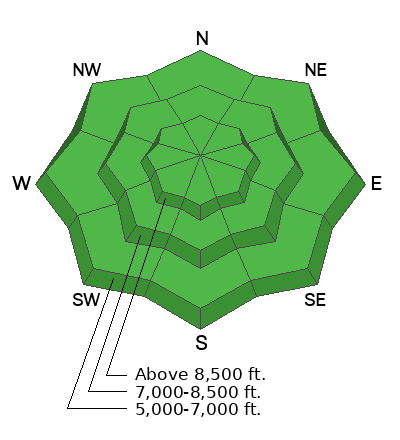To fulfill our mission, the UAC relies on our amazing backcountry community. Your support helps pay for the daily avalanche forecast, free awareness presentations across the state, and new tools like the new
Avalanche and Observation Explorer. As the end of the year approaches, please consider
donating to the UAC.Currently, the
Tony Grove Snotel at 8400' has 42" of total snow, with a temperature of 15 °F. The
CSI Logan Peak weather station at 9700' had overnight temperatures in the teens ° F and winds blowing from the northwest 25 MPH with gusts up to 37 MPH. The temperature is 17°F at the
Card Canyon weather station, with 33.6" of total snow on the ground. The
Paris Peak weather station in Southern Idaho is reporting overnight temperatures in the 20's °F with winds blowing from the north 22 gusting to 28 MPH. Wind chill speeds in most locations are below freezing this morning.
For today, winds will blow from the west-northwest 15-20MPH gusting to 25MPH at the highest ridgelines. Skies start clear with temperatures 15-22°F. Clouds are forecast to increase throughout the day with a chance of snow flurries this afternoon.
No recent avalanches were reported in the Logan Zone. In the mountains south of Logan, backcountry travelers reported natural shallow wind-drifted snow and dry loose avalanches running in steep terrain above treeline and I would expect the same could be found in the Logan area mountains.
- Local observations are available HERE.
- Visit our avalanche page to check out this season’s activity across Utah.









